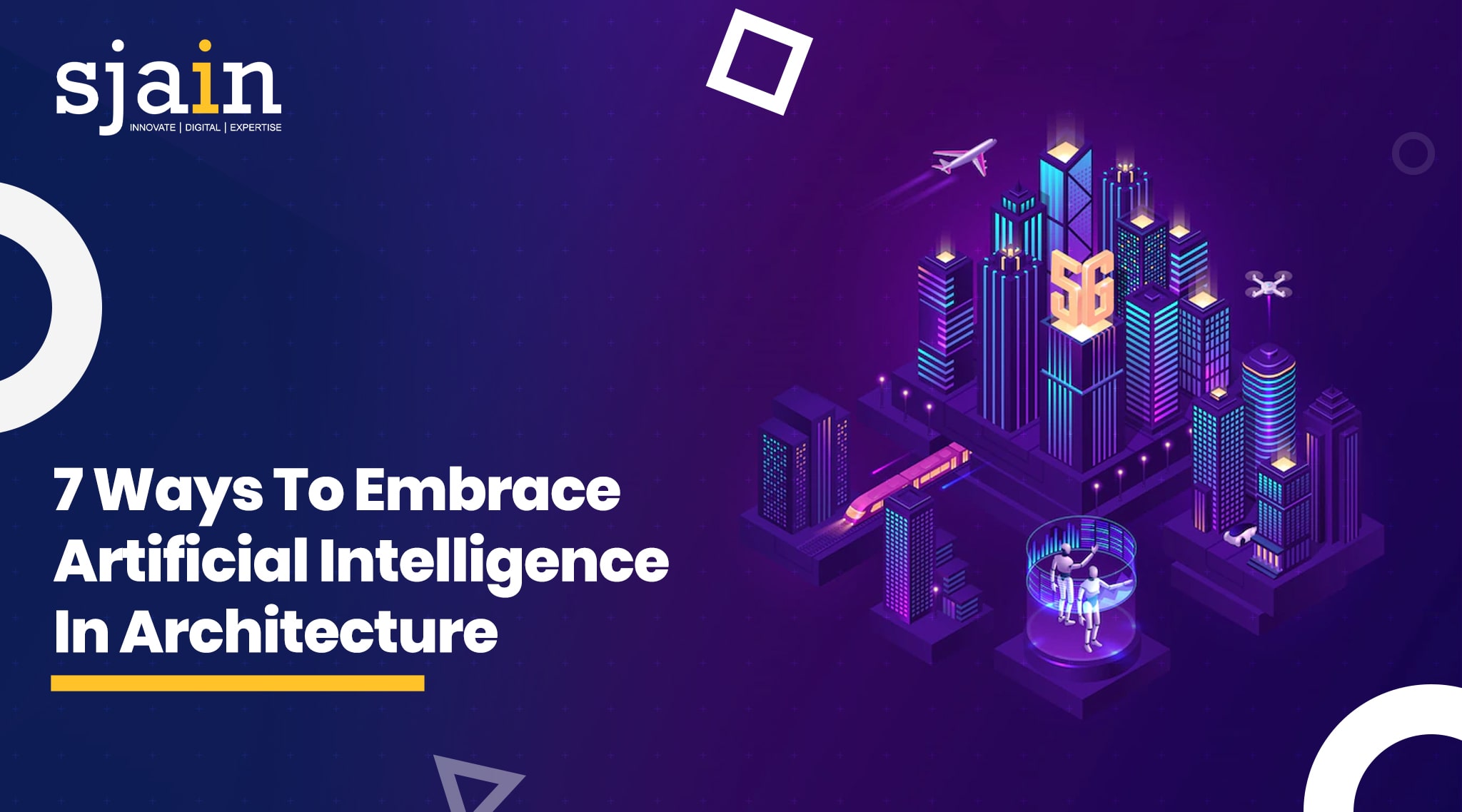7 Ways To Embrace Artificial Intelligence In Architecture
With the technological advancements that have been made in the field of architecture, the arrival of artificial intelligence (AI) systems has turned the architectural industry on its head. The integration of AI into architecture has caused designers to rethink everything from user experience to building design and construction. So how can architects begin to embrace artificial intelligence in architecture industry? We’ve compiled a list of 7 ways that you can start using AI to revolutionize your work as an architect today!
When it comes to architecture, there’s still one thing that humans can do better than artificial intelligence – conceptualize and design groundbreaking structures that no one has ever built before.
However, as artificial intelligence gets smarter, we are seeing more and more applications of AI in the design process, with AI now able to carry out many of the menial tasks associated with architecture, freeing up architects to innovate and focus on the big picture.
Artificial intelligence in architecture has huge potential to dramatically change the way we design and build buildings and infrastructure. The following are seven ways that AI can affect your profession in the near future, as well as some additional resources on how to embrace AI in your own work as an architect.
Ways To Embrace Artificial Intelligence In Architecture
1) Design Process
When architects build the environment, they have traditionally relied on hard data: a set of algorithms and guidelines that govern the dimensions of space. But recent advances in computation are challenging this approach. Computers can now measure emotion and movement.
They can process inputs from smartphones, cameras, smart televisions, and even people’s biometrics. Advances in machine learning will give architects new tools with which to interpret and explore design decisions, leading them towards a more democratic process where human intuition becomes intertwined with an AI architect.
READ: Role Of Artificial Intelligence In The Future Education Sector
2) Project Planning
The advent of 3D modeling and rapid prototyping has changed the landscape of design, making it possible for architecture firms to create models quickly without ever having their hands on a piece of paper.
Combining this technological innovation with advancements in AI, firms can now augment their modeling process by using AI-enabled photorealistic rendering. By applying different materials or colors and generating natural ambient lighting, you can create stunning images which capture the essence of your design. This is the power that artificial intelligence in architecture holds.
3) Construction Processes
We believe that the most important driver of our work is how we come together as an interdisciplinary team. Over the course of any project, many specialties are needed in order to successfully carry out the task at hand. A few examples include structural engineers, civil engineers, cost estimators, CAD technicians, and of course designers.
AI and Machine Learning are technologies that are used in a range of subjects, one of which is Architecture. Artificial Intelligence in Architecture helps us design the buildings we want, by selecting the right materials, textures, and even dimensions.
It also reduces our workload because it creates designs that need minimal human intervention. And it solves some of our problems like when clients have limited choices for building construction material or when architects can’t choose between two competing design principles for a building facade.
4) Material Production
This change is no different than the introduction of computer-aided design (CAD) and building information modeling (BIM) which was formally coined in 1987. The lack of these tools would be almost unthinkable now and they both led to productivity gains and significant decreases in construction errors.
AI has been on the horizon for some time, but over the last few years, tech companies are shifting their focus away from autonomous vehicles or chatbots and towards architectural design, urban planning, or building maintenance.
5) Energy Usage
Artificial Intelligence and architecture is here and it will not go away. Yes, it may not be plug-and-play, but if architects want to succeed and stay relevant, they will need to evolve with the times. AI can do things for us that we humans just can’t do on our own. It’s time to stop fighting progress. It’s time to start embracing artificial intelligence in architecture.
The next era of design could have artificial intelligence doing much of the heavy lifting, allowing designers to focus on creative and innovative problem-solving while using their human brains to come up with ingenious solutions to complex problems. Artificial intelligence in architecture is not going anywhere so get ready.
6) Human Interaction
As A.I. becomes more of a reality, it’s important for designers and builders to adopt and embrace the technology while still maintaining human interaction. Doing so will help both professions evolve while still providing quality design that is driven by human needs. For example, architects could use an AI chatbot like What-3 Words as an assistant with tasks such as scheduling meetings or sending contracts.
The chatbot would then interact with the architect’s staff who would do the actual work and provide feedback on how their day went. Such automation frees up architects to focus on what they are good at – designing spaces that meet people’s needs.
Also Read: Introduction To Data Mining Solutions for Business Need: Concepts and Techniques
7) Human Experience
For centuries, architects have dreamed of designing a skyscraper that would climb ever-higher and out of the earth. The Burj Khalifa takes us closer than any other design by revealing the unbelievable possibility of an entirely unsupported structure, with the addition of built-in environmental systems that regulate light, temperature, and ventilation.
Conclusion
But will we really be able to build what our imagination dreams up?
Architects everywhere are beginning to grapple with their role in an AI-driven world.
Each of the above aspects points to the same conclusion, namely that future architects will focus increasingly on using artificial intelligence to meet all requirements of the customers rather than designing as much as they already do.
Sjain Ventures can enable businesses to leverage the benefits of Artificial Intelligence in architecture. Since the beginning, Sjain has provided services to clientele all around the world and has successfully completed a plethora of projects. We have always been a leader in adopting developing technologies and have assisted businesses in implementing them thanks to our experienced and knowledgeable team of developers.
An increasing number of architectural engineering projects are using AI, and our expertise can help you with your project implementation. Book an appointment with us with your needs, and our knowledgeable business development manager will handle it.

